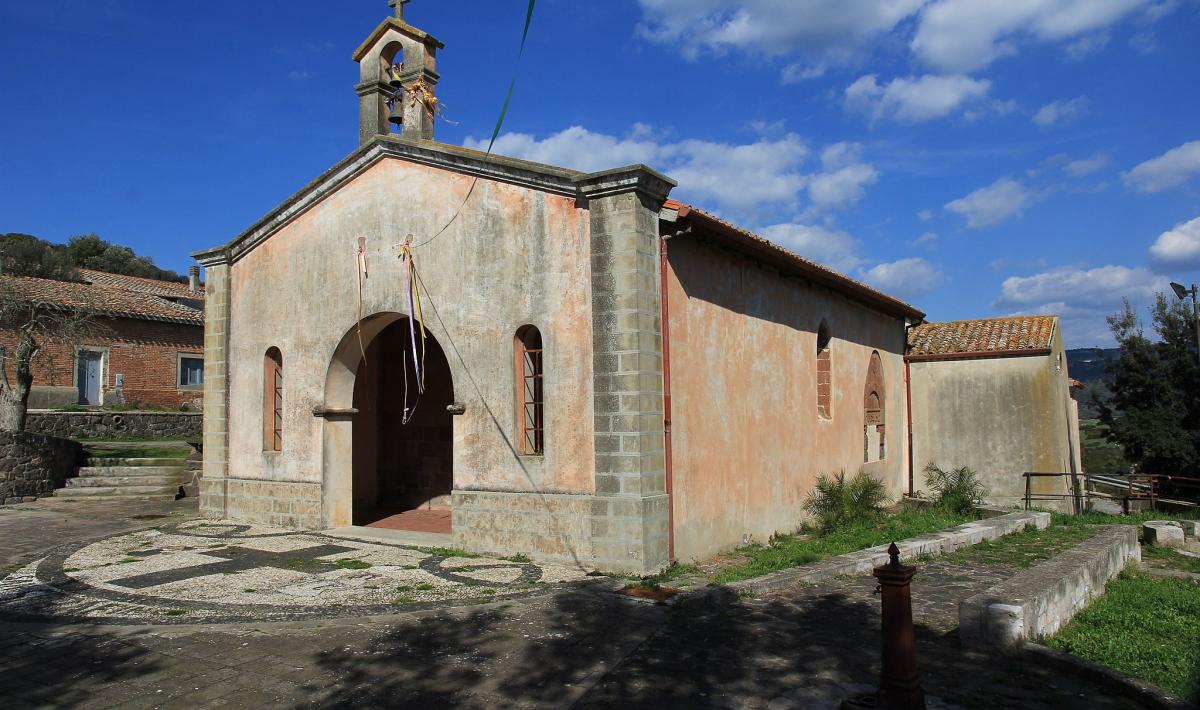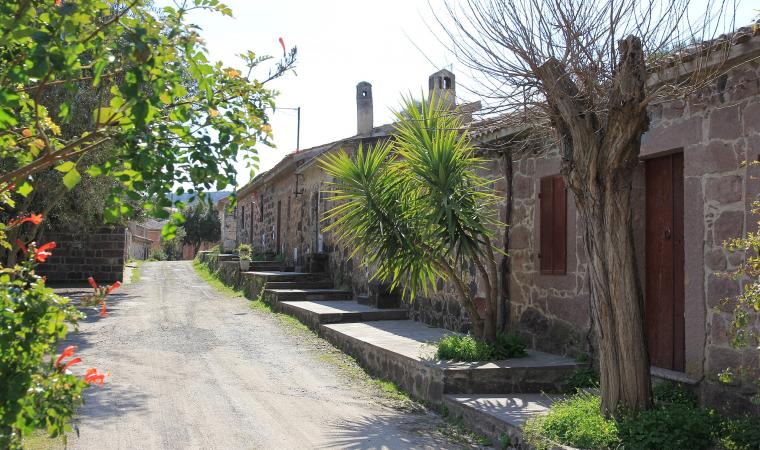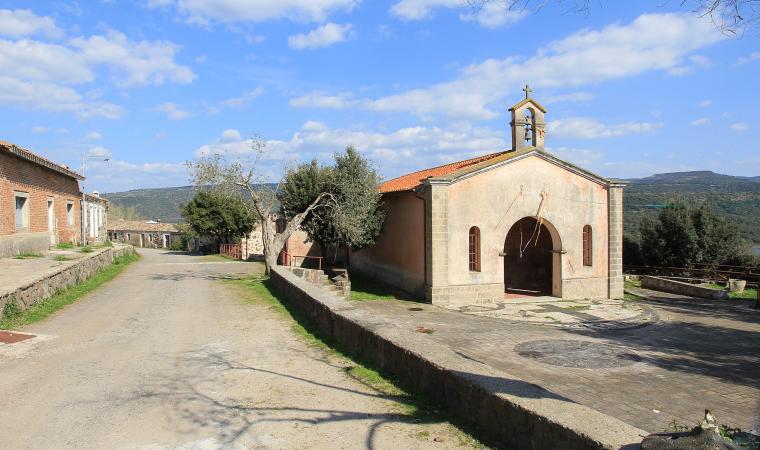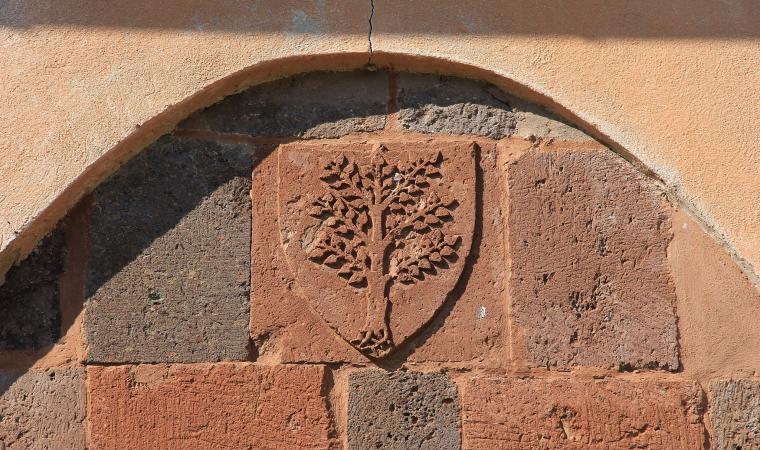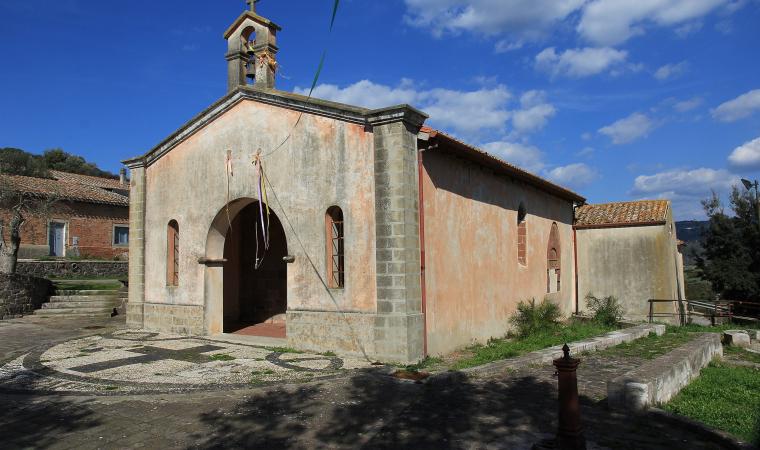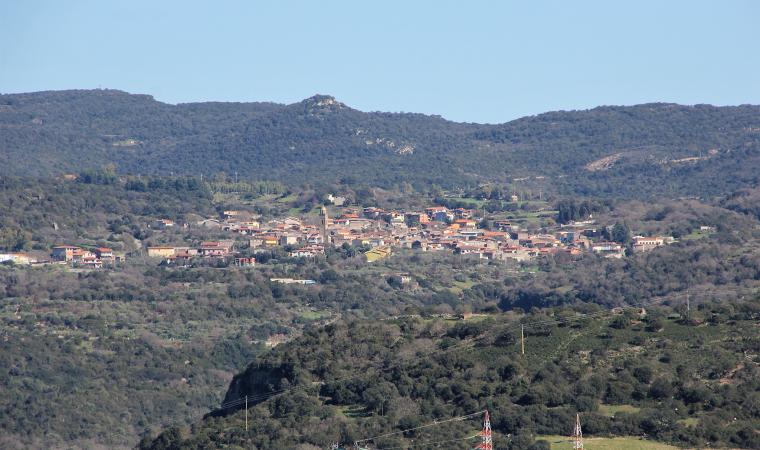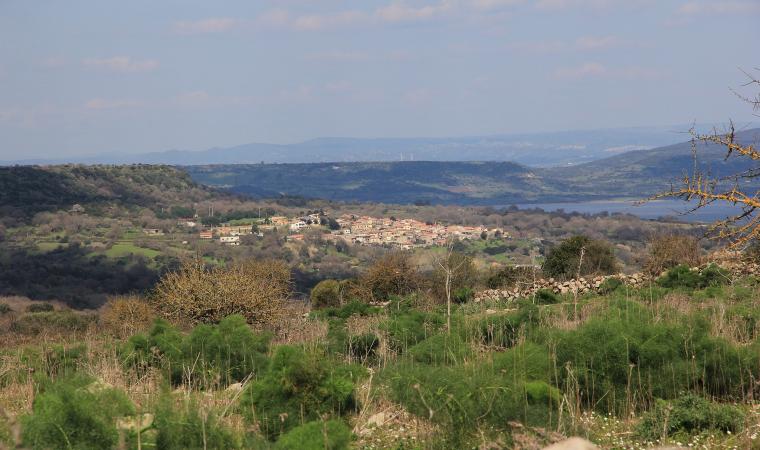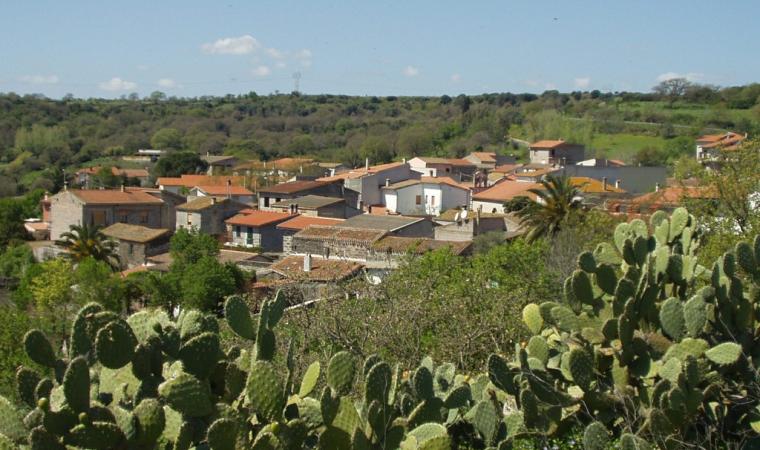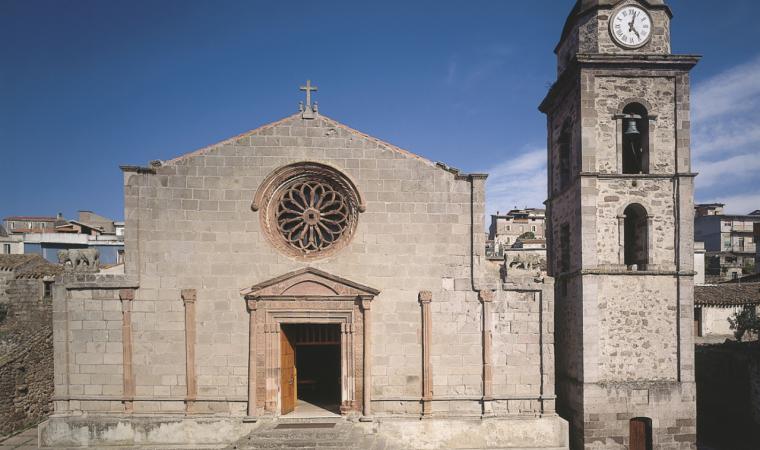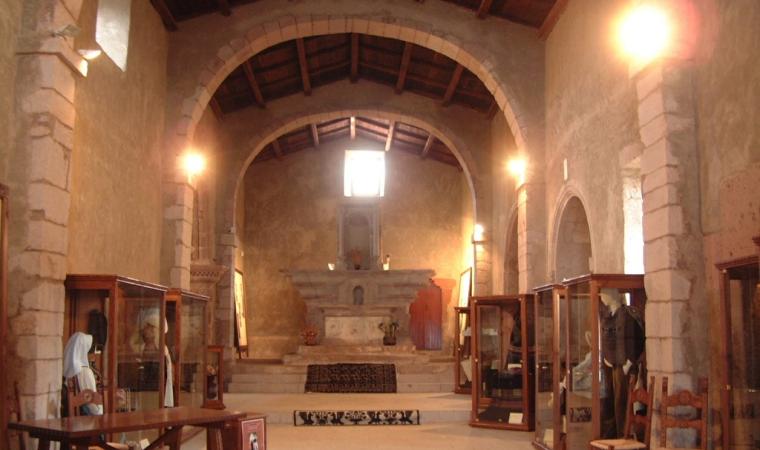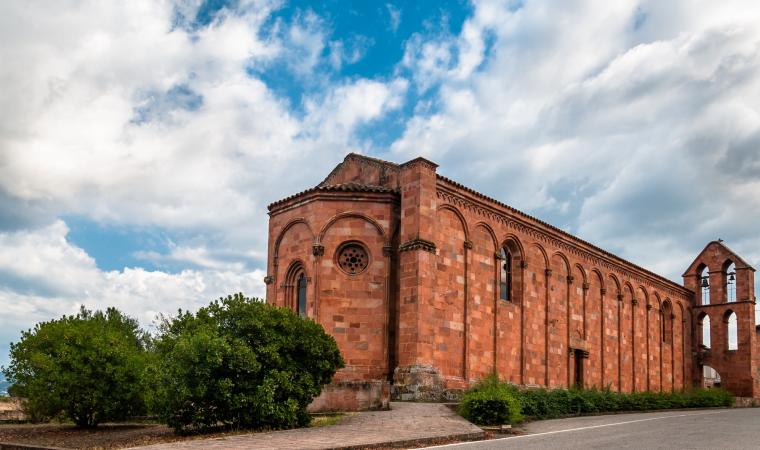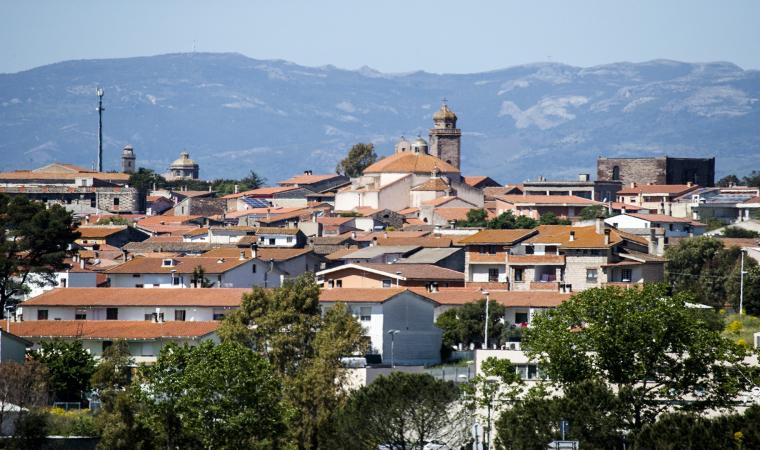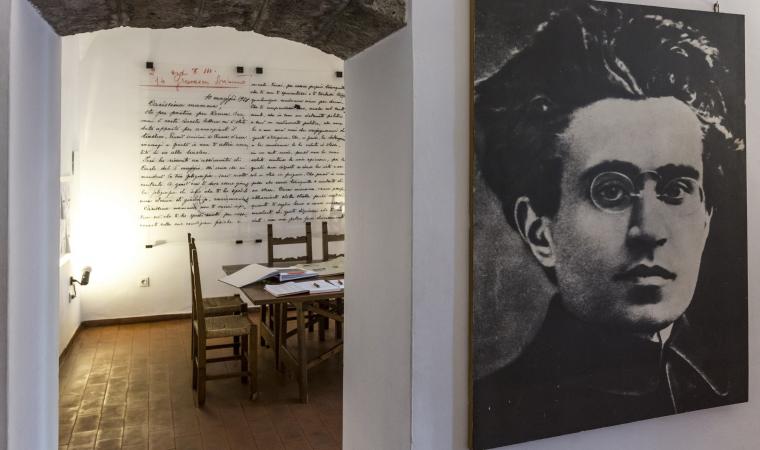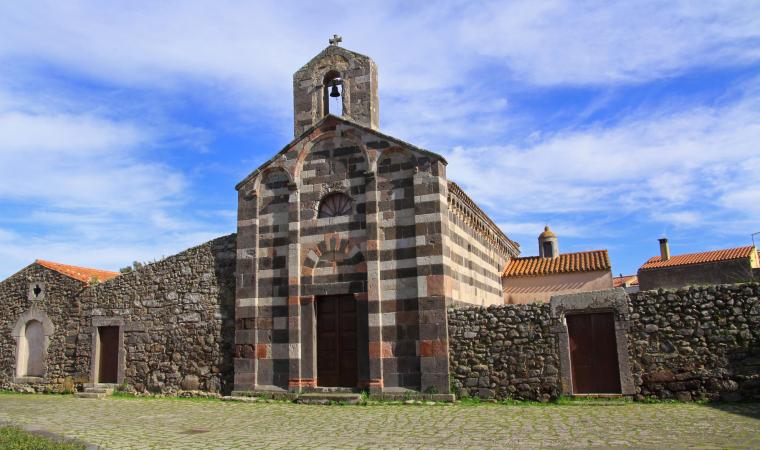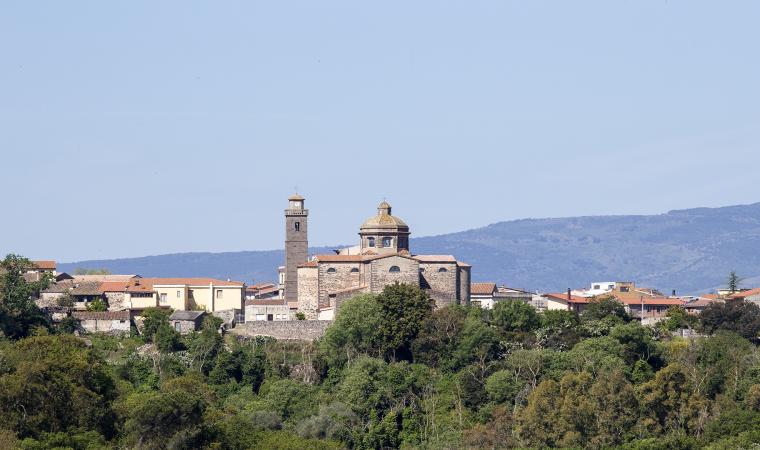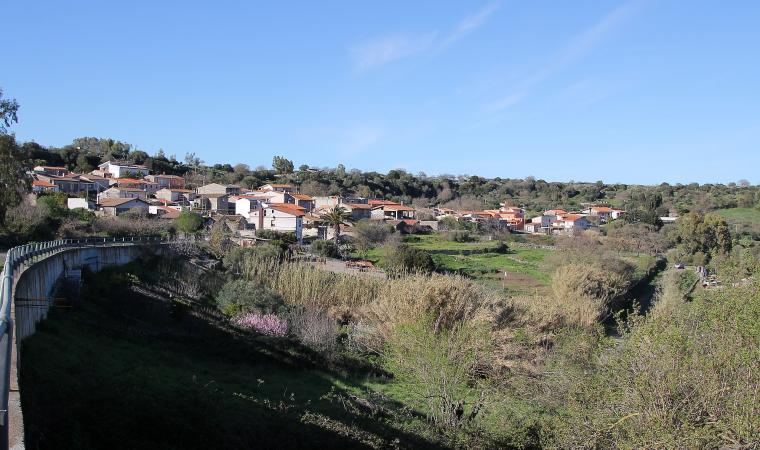The buildings stand on the green slopes of the Perda 'e pranu plateau, set in a loop of the beautiful Omodeo lake. The sanctuary and novenary of San Serafino, immersed in the evocative scenery of Ghilarza territory, were built on the site of a 7th century Byzantine church, probably built on Roman ruins, of which pottery from the late imperial era were discovered during the works of restoration of the sanctuary (1950). Many centuries later, in the Giudicato period, the Byzantine building was rebuilt and enlarged. It retained its medieval appearance until 1884 when two side chapels were added, giving it the current cross-shaped layout. The single rectangular space is covered with a wooden roof on trusses and closes with a semicircular apse. The external decorations remain: on the fourteenth-century door of the façade, you will notice a light in the shape of a cross and a tile with the Agnus Dei, while in the southern side there is an arched door, above which an uprooted tree is carved, perhaps the oldest coat of arms of the Giudicato d'Arborea. On the architrave, San Serafino is represented together with ecclesiastics and high-ranking personalities. There is a seventeenth century pulpit, of which only a beautiful trachyte column remains, with a relief of angelic faces and the 'exhibition' of the vine, typical motifs of Sardinian minor art.
The church is surrounded by sas muristenes, 'casette' (lodgings) built in the seventeenth century to accommodate travellers and pilgrims: the novenary of San Serafino has 103 of them, and they are inhabited and very popular for the nine days of celebrations in his honour. The sanctuary is rich in social and cultural references, expressing the profound meaning of a community, retaining echoes and secular suggestions. The festival of San Serafino is known for its peace and intimacy. The procession passes through all the muristenes. The children run ahead of the saint, knocking at each house and announcing his arrival. The novenas are recited, sungos sososos (traditional religious songs) are sung, and food is eaten: when the bells stop ringing, it is an announcement of the saint's return to the church and the beginning of the dances.

